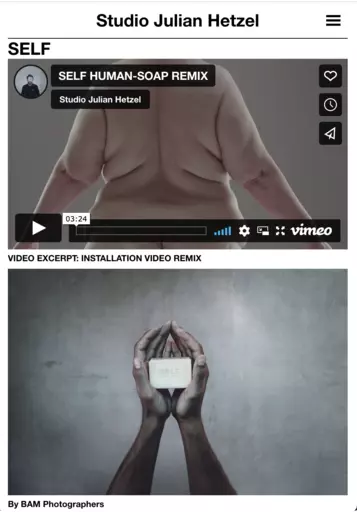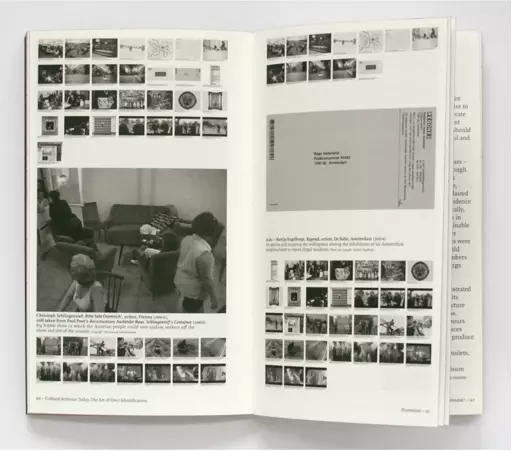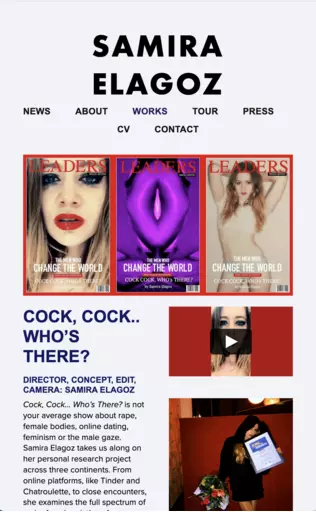
Subversive Affirmation
Sigrid Merx

&
Liesbeth Groot Nibbelink
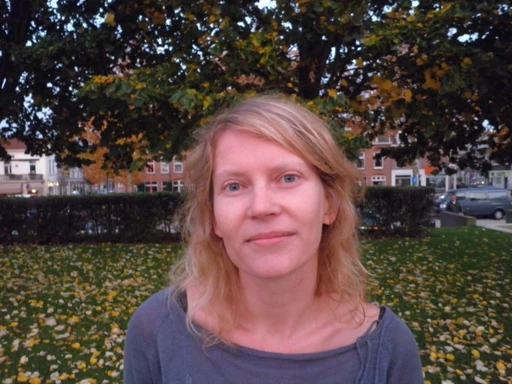
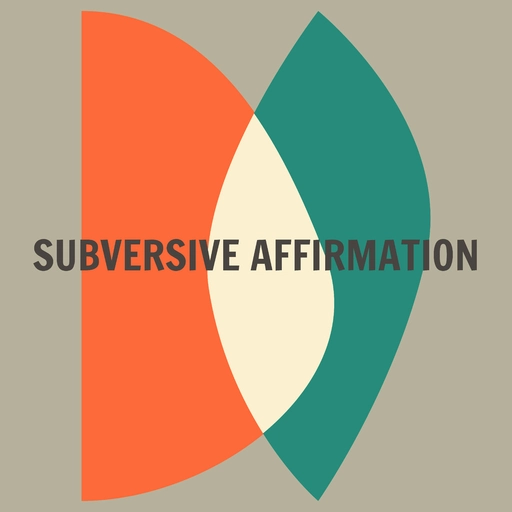
Keywords:
subversive affirmation, over-identification, imitation as critical practice, mimesis, performance and politics, camouflage acts
Imitation 2.0
In the years 2018 and 2019, you might have had the chance to run into an elegant concept store selling soap—soap made of human fat. Sitting amid actual shops in the middle of a shopping centre, this store disguised itself as a real store; in fact, it was a performance installation created by Julian Hetzel, designed to critique overconsumption, development aid, and greenwashing strategies. The installation was called Schuldfabrik
The 2018 edition was actually called SELF, which was also the brand name of the soap. SELF focussed on the store rather than the factory and was presented during the 2019 Prague Quadrennial of Performance Design and Space.
This concept involved the upcycling of human waste (human fat, achieved through liposuction) by turning it into soap, which was then sold to finance the boring of wells in Malawi. Had it been real, it would have been a rather outrageous business ideology as it challenged ethical boundaries and reaffirmed the precise power structures which post-colonialist thinkers seek to question. Hetzel, however, exactly copied existing greenwashing practices, yet in an exaggerated manner—with the goal of rendering them visible and making them a topic for public discussion.
Sébastien Hendrickx, ‘Kunst die zich voordoet alsof ze iets anders is dan kunst,’ Rekto Verso, 25 September, 2013, www.rektoverso.be/artikel/kunst-die-zich-voordoet-alsof-ze-iets-anders-dan-kunst.
Subversive affirmation is a tactic of resistance in which one ostensibly affirms but ultimately subverts the strategies of one’s ‘opponent.’ Artists mimic ideologies, practices and policies, often in a drastically literal way, and they critically assess those systems by subtly interrupting and undermining them. Subversive affirmation is not only a strategy we may recognise in artistic work but also a concept through which we can discuss and analyse this strategy. To this end, we can start by identifying and examining the various components or ‘building blocks’ of subversive affirmation.
These components were first described by the scholars Inke Arns and Sylvia Sasse in their essay ‘Subversive Affirmation: On Mimesis as a Strategy of Resistance.’
Inke Arns and Sylvia Sasse, ‘Subversive Affirmation: On Mimesis as a Strategy of Resistance,’ in East Art Map: Contemporary Art and Eastern Europe, edited by IRWIN, pp. 444-455 (Cambridge, MA: MIT Press, 2006).
Subversive affirmation
Subversive affirmation is a tactic of resistance in which one ostensibly affirms but ultimately subverts the strategies of one’s ‘opponent.’ Artists mimic ideologies, practices and policies, often in a drastically literal way, and they critically assess those systems by subtly interrupting and undermining them. Subversive affirmation is not only a strategy we may recognise in artistic work but also a concept through which we can discuss and analyse this strategy. To this end, we can start by identifying and examining the various components or ‘building blocks’ of subversive affirmation.These components were first described by the scholars Inke Arns and Sylvia Sasse in their essay ‘Subversive Affirmation: On Mimesis as a Strategy of Resistance.’
Inke Arns and Sylvia Sasse, ‘Subversive Affirmation: On Mimesis as a Strategy of Resistance,’ in East Art Map: Contemporary Art and Eastern Europe, edited by IRWIN, pp. 444-455 (Cambridge, MA: MIT Press, 2006).
Subversive affirmation is a tactic of resistance in which one ostensibly affirms but ultimately subverts the strategies of one’s ‘opponent.’ Artists mimic ideologies, practices and policies, often in a drastically literal way, and they critically assess those systems by subtly interrupting and undermining them. Subversive affirmation is not only a strategy we may recognise in artistic work but also a concept through which we can discuss and analyse this strategy. To this end, we can start by identifying and examining the various components or ‘building blocks’ of subversive affirmation.
These components were first described by the scholars Inke Arns and Sylvia Sasse in their essay ‘Subversive Affirmation: On Mimesis as a Strategy of Resistance.’
Inke Arns and Sylvia Sasse, ‘Subversive Affirmation: On Mimesis as a Strategy of Resistance,’ in East Art Map: Contemporary Art and Eastern Europe, edited by IRWIN, pp. 444-455 (Cambridge, MA: MIT Press, 2006).
Subversive affirmation is a tactic of resistance in which one ostensibly affirms but ultimately subverts the strategies of one’s ‘opponent.’ Artists mimic ideologies, practices and policies, often in a drastically literal way, and they critically assess those systems by subtly interrupting and undermining them. Subversive affirmation is not only a strategy we may recognise in artistic work but also a concept through which we can discuss and analyse this strategy. To this end, we can start by identifying and examining the various components or ‘building blocks’ of subversive affirmation.
These components were first described by the scholars Inke Arns and Sylvia Sasse in their essay ‘Subversive Affirmation: On Mimesis as a Strategy of Resistance.’
Inke Arns and Sylvia Sasse, ‘Subversive Affirmation: On Mimesis as a Strategy of Resistance,’ in East Art Map: Contemporary Art and Eastern Europe, edited by IRWIN, pp. 444-455 (Cambridge, MA: MIT Press, 2006).
[…] an artistic/political tactic that allows artists/activists to take part in certain social, political, or economic discourses and to affirm, appropriate, or consume them while simultaneously undermining them. It is characterised precisely by the fact that with affirmation there is simultaneously taking place a distancing from, or revelation of what is being affirmed. In
Subversive affirmation is a tactic of resistance in which one ostensibly affirms but ultimately subverts the strategies of one’s ‘opponent.’ Artists mimic ideologies, practices and policies, often in a drastically literal way, and they critically assess those systems by subtly interrupting and undermining them. Subversive affirmation is not only a strategy we may recognise in artistic work but also a concept through which we can discuss and analyse this strategy. To this end, we can start by identifying and examining the various components or ‘building blocks’ of subversive affirmation.
These components were first described by the scholars Inke Arns and Sylvia Sasse in their essay ‘Subversive Affirmation: On Mimesis as a Strategy of Resistance.’
Inke Arns and Sylvia Sasse, ‘Subversive Affirmation: On Mimesis as a Strategy of Resistance,’ in East Art Map: Contemporary Art and Eastern Europe, edited by IRWIN, pp. 444-455 (Cambridge, MA: MIT Press, 2006).
Arns and Sasse 2006, p. 445.
Arns and Sasse observe how since the late 1990s,
Subversive affirmation is a tactic of resistance in which one ostensibly affirms but ultimately subverts the strategies of one’s ‘opponent.’ Artists mimic ideologies, practices and policies, often in a drastically literal way, and they critically assess those systems by subtly interrupting and undermining them. Subversive affirmation is not only a strategy we may recognise in artistic work but also a concept through which we can discuss and analyse this strategy. To this end, we can start by identifying and examining the various components or ‘building blocks’ of subversive affirmation.
These components were first described by the scholars Inke Arns and Sylvia Sasse in their essay ‘Subversive Affirmation: On Mimesis as a Strategy of Resistance.’
Inke Arns and Sylvia Sasse, ‘Subversive Affirmation: On Mimesis as a Strategy of Resistance,’ in East Art Map: Contemporary Art and Eastern Europe, edited by IRWIN, pp. 444-455 (Cambridge, MA: MIT Press, 2006).
Subversive affirmation is a tactic of resistance in which one ostensibly affirms but ultimately subverts the strategies of one’s ‘opponent.’ Artists mimic ideologies, practices and policies, often in a drastically literal way, and they critically assess those systems by subtly interrupting and undermining them. Subversive affirmation is not only a strategy we may recognise in artistic work but also a concept through which we can discuss and analyse this strategy. To this end, we can start by identifying and examining the various components or ‘building blocks’ of subversive affirmation.
These components were first described by the scholars Inke Arns and Sylvia Sasse in their essay ‘Subversive Affirmation: On Mimesis as a Strategy of Resistance.’
Inke Arns and Sylvia Sasse, ‘Subversive Affirmation: On Mimesis as a Strategy of Resistance,’ in East Art Map: Contemporary Art and Eastern Europe, edited by IRWIN, pp. 444-455 (Cambridge, MA: MIT Press, 2006).
Remarkably, the strategy of
Subversive affirmation is a tactic of resistance in which one ostensibly affirms but ultimately subverts the strategies of one’s ‘opponent.’ Artists mimic ideologies, practices and policies, often in a drastically literal way, and they critically assess those systems by subtly interrupting and undermining them. Subversive affirmation is not only a strategy we may recognise in artistic work but also a concept through which we can discuss and analyse this strategy. To this end, we can start by identifying and examining the various components or ‘building blocks’ of subversive affirmation.
These components were first described by the scholars Inke Arns and Sylvia Sasse in their essay ‘Subversive Affirmation: On Mimesis as a Strategy of Resistance.’
Inke Arns and Sylvia Sasse, ‘Subversive Affirmation: On Mimesis as a Strategy of Resistance,’ in East Art Map: Contemporary Art and Eastern Europe, edited by IRWIN, pp. 444-455 (Cambridge, MA: MIT Press, 2006).
Subversive affirmation is a tactic of resistance in which one ostensibly affirms but ultimately subverts the strategies of one’s ‘opponent.’ Artists mimic ideologies, practices and policies, often in a drastically literal way, and they critically assess those systems by subtly interrupting and undermining them. Subversive affirmation is not only a strategy we may recognise in artistic work but also a concept through which we can discuss and analyse this strategy. To this end, we can start by identifying and examining the various components or ‘building blocks’ of subversive affirmation.
These components were first described by the scholars Inke Arns and Sylvia Sasse in their essay ‘Subversive Affirmation: On Mimesis as a Strategy of Resistance.’
Inke Arns and Sylvia Sasse, ‘Subversive Affirmation: On Mimesis as a Strategy of Resistance,’ in East Art Map: Contemporary Art and Eastern Europe, edited by IRWIN, pp. 444-455 (Cambridge, MA: MIT Press, 2006).
Slavoj Žižek, The Universal Exception, edited by Rex Butler and Scott Stephens (London: Bloomsbury Publishers, 2014), p. 17.
Secondly, there should be a ‘difference’ within the perfect imitation that can produce a form of distance and, therefore, alienation and destabilisation. Arns and Sasse refer to this as the surplus but do not really unpack this notion. What they seem to suggest is that there is an excess of affirmation, which turns affirmation into its opposite. We can think of practices of imitation that are carried out so overenthusiastically that they do ‘more’ than what is needed to pass as real. In Julian Hetzel’s Schuldfabrik, for instance, the ideology of upcycling is presented in such a compelling and convincing way that one is inclined to go along with it at first, yet the idea of using human waste for paying debts and washing away Western guilt is so ‘over the top’—let alone morally corrupt—that it cannot be true.
Hetzel deliberately uses the two meanings of the German ‘Schuld,’ referring both to guilt as well as debt.
BAVO, ‘Always Choose the Worst Option. Artistic Resistance and the Strategy of Over-Identification,’ Valiz, 2008, www.bavo.biz/always-choose-the-worst-option-artistic-resistance-and-the-strategy-of-over-identification.
Appropriating the logo and flag of the Freedom Party of Austria (FPÖ), Schlingensief presented the event as an action of the right-wing party, led by Jürgen Haider. The FPÖ was in power at the time and known for strong anti-immigrant sentiments. With this project, Schlingensief wanted to ‘play the impossible so hard that it would become the possible,’ adding that ‘it is impossible to contradict Haider. What is possible is playing the Haider card to its most extreme.’
Schlingensief quoted in Arns and Sasse 2006, p. 453.
Critics and audiences responding to the work of Yes Men or Schlingensief are often not really sure what to think of the artwork, and especially what to make of the ideological beliefs professed in these works: are these the beliefs of the artist, or not? Do the artists really mean what they are saying? Is this really real? Such ambiguity is key to
Subversive affirmation is a tactic of resistance in which one ostensibly affirms but ultimately subverts the strategies of one’s ‘opponent.’ Artists mimic ideologies, practices and policies, often in a drastically literal way, and they critically assess those systems by subtly interrupting and undermining them. Subversive affirmation is not only a strategy we may recognise in artistic work but also a concept through which we can discuss and analyse this strategy. To this end, we can start by identifying and examining the various components or ‘building blocks’ of subversive affirmation.
These components were first described by the scholars Inke Arns and Sylvia Sasse in their essay ‘Subversive Affirmation: On Mimesis as a Strategy of Resistance.’
Inke Arns and Sylvia Sasse, ‘Subversive Affirmation: On Mimesis as a Strategy of Resistance,’ in East Art Map: Contemporary Art and Eastern Europe, edited by IRWIN, pp. 444-455 (Cambridge, MA: MIT Press, 2006).
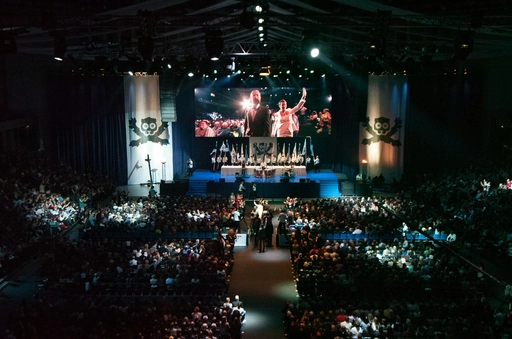
Performance and Politics: Theatre NO99’s Unified Estonia
On March 24, 2010—roughly a year before the next parliamentary elections in Estonia were due to take place—the company Theatre NO99 announced a new political movement, named Unified Estonia. The theatre-makers not only presented a political manifesto, largely inspired by a populist rhetoric of freedom and power to the people, but also instigated an elaborate press campaign and constantly sought the attention of the press. Through radio and television appearances, (staged) rumours and poster campaigns, the movement succeeded in staying front-page news for over two months.Their success, with polls estimating 20% of the votes, culminated in a large party convention, a.k.a. super performance, for more than 7,000 attendees, which made real politicians rather nervous. With this project, Theatre NO99 aimed to explore and criticise large-scale manipulation and the elitist power of political decision-makers, who often claim that politics is too complex for common citizens, thus excluding them from the democratic process. What does it actually take to raise a political party, the artists wondered, and if politicians do bad theatre, why can’t we do good politics?
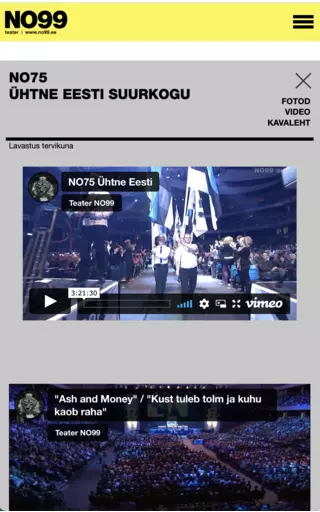
WEBSITE:
Subversive affirmation is a tactic of resistance in which one ostensibly affirms but ultimately subverts the strategies of one’s ‘opponent.’ Artists mimic ideologies, practices and policies, often in a drastically literal way, and they critically assess those systems by subtly interrupting and undermining them. Subversive affirmation is not only a strategy we may recognise in artistic work but also a concept through which we can discuss and analyse this strategy. To this end, we can start by identifying and examining the various components or ‘building blocks’ of subversive affirmation.
These components were first described by the scholars Inke Arns and Sylvia Sasse in their essay ‘Subversive Affirmation: On Mimesis as a Strategy of Resistance.’
Inke Arns and Sylvia Sasse, ‘Subversive Affirmation: On Mimesis as a Strategy of Resistance,’ in East Art Map: Contemporary Art and Eastern Europe, edited by IRWIN, pp. 444-455 (Cambridge, MA: MIT Press, 2006).
This rhetoric taps into a deeply felt sense of powerlessness and citizens’ desire to take back control, a sentiment that fuels populism worldwide (we might think here of Brexit in the UK, or the MAGA movement in the US
MAGA, or Make America Great Again, was the official motto of the 2016 Trump campaign in the US and featured prominently in his 2020 campaign. Brexit took place in 2016, when UK citizens voted to leave the EU, influenced by the ‘take back control’ slogan of the leave camp, which alludes to the bygone days of the British commonwealth, a former imperium turned into a ‘past perfect’ of autonomy and world leadership.
These rumours also reflect the ambiguity that surrounded the entire project: are these performers serious, or are they actors—and do these options exclude one another? The company returns these inquiries by asking why they are getting these questions, as performers, and not the politicians from the Centre Party who use(d) the same means—and who equally could be regarded as performers, of course. The entire campaign is, by the way, also an excellent example of transmedia storytelling as the company used a wide variety of (media) platforms to put their message across.
The tutorials were based on intensive research and analysis of political campaigns. Nothing was made up; they just presented their findings—yet deadly serious, thus revealing the troubling perversity of this reality. Interestingly, these staged acts of over-identification led to a ‘toning down’ by actual politicians, and launched investigations of corrupt financial structures within existing parties, which functioned exactly as had been described.
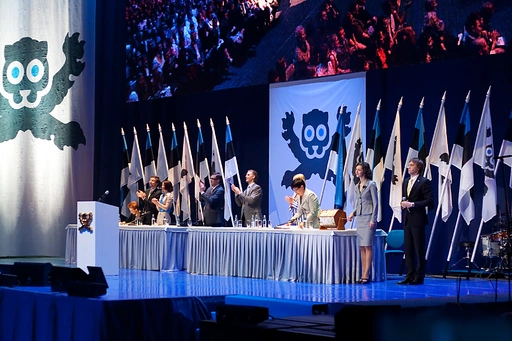
Critical Reflection
Unified Estonia was an extremely successful political action. This success is partly due to the brilliant concept and the transmedia approach, and partly caused by the populist agenda: the company sought to reach all, and many responded. This latter aspect also raised ethical dilemmas. The thing the performers wanted to criticise—political manipulation, populism—precisely caused their success. Ash and Money documents some heated discussions within the company: are we actually reaching our goal, or are we only confirming the thing we wish to attack? Yet, the artists also find the populist approach legitimate, as it enables them to show the tragedy of how easy it is, actually, to manipulate people’s behaviour, and to do so by quite simple and vulgar means.Their discussion exposes the inherent paradox and risk of
Subversive affirmation is a tactic of resistance in which one ostensibly affirms but ultimately subverts the strategies of one’s ‘opponent.’ Artists mimic ideologies, practices and policies, often in a drastically literal way, and they critically assess those systems by subtly interrupting and undermining them. Subversive affirmation is not only a strategy we may recognise in artistic work but also a concept through which we can discuss and analyse this strategy. To this end, we can start by identifying and examining the various components or ‘building blocks’ of subversive affirmation.
These components were first described by the scholars Inke Arns and Sylvia Sasse in their essay ‘Subversive Affirmation: On Mimesis as a Strategy of Resistance.’
Inke Arns and Sylvia Sasse, ‘Subversive Affirmation: On Mimesis as a Strategy of Resistance,’ in East Art Map: Contemporary Art and Eastern Europe, edited by IRWIN, pp. 444-455 (Cambridge, MA: MIT Press, 2006).
The convention closes with the leader’s speech, ending with the words ‘You are free.’ Ambiguity is still a key player here: freedom is a populist trope, yet this is also Ojasoo the theatre-maker speaking, marking the end of the performance but also asking the audience to make up their own mind, inviting them to think, believe and vote in freedom, autonomously.
Why Choose Subversive Affirmation?
The projects mentioned thus far are quite large and ambitious, both in terms of length and volume.Subversive affirmation is a tactic of resistance in which one ostensibly affirms but ultimately subverts the strategies of one’s ‘opponent.’ Artists mimic ideologies, practices and policies, often in a drastically literal way, and they critically assess those systems by subtly interrupting and undermining them. Subversive affirmation is not only a strategy we may recognise in artistic work but also a concept through which we can discuss and analyse this strategy. To this end, we can start by identifying and examining the various components or ‘building blocks’ of subversive affirmation.
These components were first described by the scholars Inke Arns and Sylvia Sasse in their essay ‘Subversive Affirmation: On Mimesis as a Strategy of Resistance.’
Inke Arns and Sylvia Sasse, ‘Subversive Affirmation: On Mimesis as a Strategy of Resistance,’ in East Art Map: Contemporary Art and Eastern Europe, edited by IRWIN, pp. 444-455 (Cambridge, MA: MIT Press, 2006).
However, she also subverts the sexually coded interaction patterns and the male gaze by filming these men (turning them into objects of the gaze as well), in a scientific-objectifying manner, thus neutralising all ‘transactions’—which creates, in some instances, a space for exploring non-sexual intimacy. Cock, Cock … Who’s There? received both praise and criticism. Critics typically accuse Elagoz of reproducing sexist ideas, whereas others are thoroughly intrigued by the way she deliberately exploits and ultimately subverts the male gaze. These responses confirm the complexity and ambiguity of the work.
Elagoz’s project started from very personal and traumatic sexual experiences, and her experiments were a way of reclaiming agency. Theatre NO99’s event was fuelled by anger about political manipulation. Julian Hetzel’s Schuldfabrik fits in line with his long-term interest in large-scale socio-economic and political systems.
To work with
Subversive affirmation is a tactic of resistance in which one ostensibly affirms but ultimately subverts the strategies of one’s ‘opponent.’ Artists mimic ideologies, practices and policies, often in a drastically literal way, and they critically assess those systems by subtly interrupting and undermining them. Subversive affirmation is not only a strategy we may recognise in artistic work but also a concept through which we can discuss and analyse this strategy. To this end, we can start by identifying and examining the various components or ‘building blocks’ of subversive affirmation.
These components were first described by the scholars Inke Arns and Sylvia Sasse in their essay ‘Subversive Affirmation: On Mimesis as a Strategy of Resistance.’
Inke Arns and Sylvia Sasse, ‘Subversive Affirmation: On Mimesis as a Strategy of Resistance,’ in East Art Map: Contemporary Art and Eastern Europe, edited by IRWIN, pp. 444-455 (Cambridge, MA: MIT Press, 2006).
Online Course
Want to delve further into the topic of this essay? Then take a look at the corresponding lesson that is part of anWant to delve further into the topic of this essay? Then take a look at the corresponding lesson that is part of an online course that consists of 10 lessons based on the 10 essays in this publication. These lessons focus on the central concepts that are treated in the essays and are followed by various questions, assignments and/or work formats.
The entire online course, including an extensive introduction, can be found via the button below. If you want to go directly to the assignments for this essay, click here.
The entire
Want to delve further into the topic of this essay? Then take a look at the corresponding lesson that is part of an online course that consists of 10 lessons based on the 10 essays in this publication. These lessons focus on the central concepts that are treated in the essays and are followed by various questions, assignments and/or work formats.
The entire online course, including an extensive introduction, can be found via the button below. If you want to go directly to the assignments for this essay, click here.
Reading List
Subversive affirmation is a tactic of resistance in which one ostensibly affirms but ultimately subverts the strategies of one’s ‘opponent.’ Artists mimic ideologies, practices and policies, often in a drastically literal way, and they critically assess those systems by subtly interrupting and undermining them. Subversive affirmation is not only a strategy we may recognise in artistic work but also a concept through which we can discuss and analyse this strategy. To this end, we can start by identifying and examining the various components or ‘building blocks’ of subversive affirmation.
These components were first described by the scholars Inke Arns and Sylvia Sasse in their essay ‘Subversive Affirmation: On Mimesis as a Strategy of Resistance.’
Inke Arns and Sylvia Sasse, ‘Subversive Affirmation: On Mimesis as a Strategy of Resistance,’ in East Art Map: Contemporary Art and Eastern Europe, edited by IRWIN, pp. 444-455 (Cambridge, MA: MIT Press, 2006).
